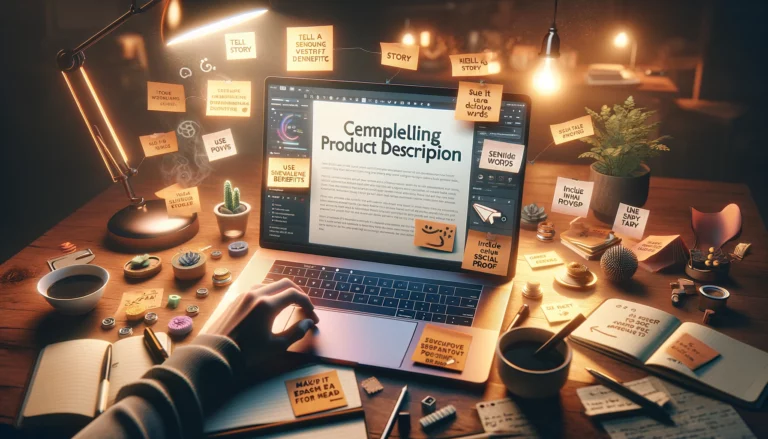The keys for mastering returns and customer service in e-commerce are firstly an effortless returns process, return policy, learn from your returns. And when it comes to customer service are firstly feedback, meet people where they are, set realistic expectations, try to win the customer for life.
When you’re in the e-commerce world, you’ll inevitably face returns and need to level up your customer service game. If you’re new to selling online or still setting things up, you might want to learn the basics of starting a successful eCommerce business first. Now, when it comes to returns, it’s not just about reversing a transaction — it’s about making sure the customer walks away feeling heard and respected, even if things didn’t go perfectly.
Article Overview:

You’re going to find out about the primary causes of returns in e-commerce and why they aren’t always a bad thing. Sometimes, a return can actually be a golden opportunity to demonstrate your commitment to customer service and to improve your product offerings.
In my opinion, crafting an efficient return policy is not just good business practice; it can also significantly boost your company’s growth. When customers trust that they can make hassle-free returns, they’re more likely to become repeat buyers. That’s the strategy I like to leverage.
Choose something that resonates with you, because we’ll soon dive into the nuts and bolts of mastering the essentials of handling online returns. Remember, a return policy that works for you and your customers can transform a potential setback into a chance for enhancement and a lasting relationship.
Mastering the Essentials of Online Returns
When it comes to online selling, the return process can be just as crucial as the initial sale. You’re going to find out about creating a return policy that won’t scare customers away but instead, assure them of their purchase decision.

First up, you want to craft a clear and concise return policy. This isn’t just about legal compliance; it’s about building trust. Make sure to communicate your return policy clearly on your site, ideally where it’s easy to find, like an FAQ section or at checkout.
Moving on, an effortless returns process is key. Provide customers with a simple form or portal to submit return requests. Remember, if you can make the return process painless, customers are more likely to shop with you again, even if the first product didn’t work out.
You might be thinking, should I automate or get personal? Well, automation can handle simple tasks, giving your team more time for personal interaction on complex issues – balance is the golden rule here. Automation is great for creating prepaid labels or updating return statuses, while personal touch can involve follow-up calls or personalized emails. Which one should you use? Why not both? I would say both, actually. Where it fits, use automate, and other places get personal!
Finally, don’t miss the opportunity to learn from your returns. Keep track of why items are being returned. Are they consistently the wrong size, color off, or just not what was expected? This data is gold – it’ll show you where you can improve product descriptions, quality, and your overall offer.
Elevating Your Customer Service Game
Good customer service is the lifeblood of any business, and when you’re selling online, it becomes even more critical. I’m going to show you how to take your customer service from good to great, and it starts with your team. Investing in regular training that emphasizes empathy and problem-solving skills can turn customer complaints into positive experiences, and here’s why that’s crucial: happy customers are your best marketers.

Feedback isn’t just something you should listen to; it’s a goldmine of information. Use every piece of feedback as a clue to making your service better. Whether it’s positive or negative, this information can guide your future policies and practices. Start by taking a close look at customer service interactions. Are there recurring issues? Address them with specific training or policy adjustments.
Customer service today needs to meet people where they are. That’s going to include offering support channels like email, chat, social media, and phone. Some customers prefer the quick convenience of chat; others want the personal touch of a phone call. Make sure you’re equipped to offer both. And remember, consistency is key across all channels. Your customer service should feel like one seamless experience, no matter how a customer reaches out.
Setting realistic expectations is probably the most overlooked aspect of customer service. If you promise the moon and deliver an asteroid, you’re setting yourself up for a fall. Be clear about what customers can expect regarding response times, solutions offered, and the overall service level. This transparency not only builds trust, but it also prevents misunderstandings that can escalate into bigger issues.
You’re not just solving a current problem; you’re also trying to win the customer for life. Keep that long game in mind with every interaction. Sure, a refund or replacement might solve today’s issue, but thoughtful communication and follow-up can make a customer feel valued beyond the transaction. Remember, it’s about building a rapport that can turn a one-time buyer into a loyal advocate for your brand.
Beyond the Return: Building Long-Term Customer Relationships
You’ve navigated the choppy waters of returns, but I’m going to tell you now that’s not where the journey ends. Building strong customer relationships is about what happens after the return. You want to turn that one-time interaction into a lasting connection.
Here is a video that will give you a good understanding of what we will go through. And it will help you with how to build that customer relationship. This video is in the middle of a series, and they will mention it, so don’t get worried when they do, we haven’t mentioned their video before or something like that:
After a customer makes a return, this is your golden opportunity to reach out. A follow-up email or survey to understand their experience shows you care and provides valuable insights. It’s also a chance to gently reintroduce them to your products or offer them a discount on future purchases.
Don’t forget about loyalty programs. They’re a powerful tool for keeping your customers coming back for more. By offering points, discounts, or special privileges, you’re not just incentivizing repeat purchases. You’re also showing your appreciation, and that can turn a dissatisfied customer into a brand advocate.
Gathering positive feedback is equally important. When customers have a good experience, invite them to leave a review. These testimonials are worth their weight in gold. They build credibility and can often be the deciding factor for new customers teetering on the edge of a purchase.
Lastly, think community. Instead of just selling products, why not build an environment where your customers can engage with each other and your brand? Host forums, social media discussions, or user groups. When people feel part of something, they stick around – and they bring friends.
You have mastered Returns and Customer Service in E-Commerce
In conclusion, returns are a bridge to future sales and the litmus test for customer service. By applying the advice here, you’re not just troubleshooting—you’re fostering a positive experience that will resonate with customers long after their initial purchase. Focus on these relationships, and you’ll see not only repeat customers but also advocates for your brand. So, invest in these connections, they’re the backbone of your online presence.







